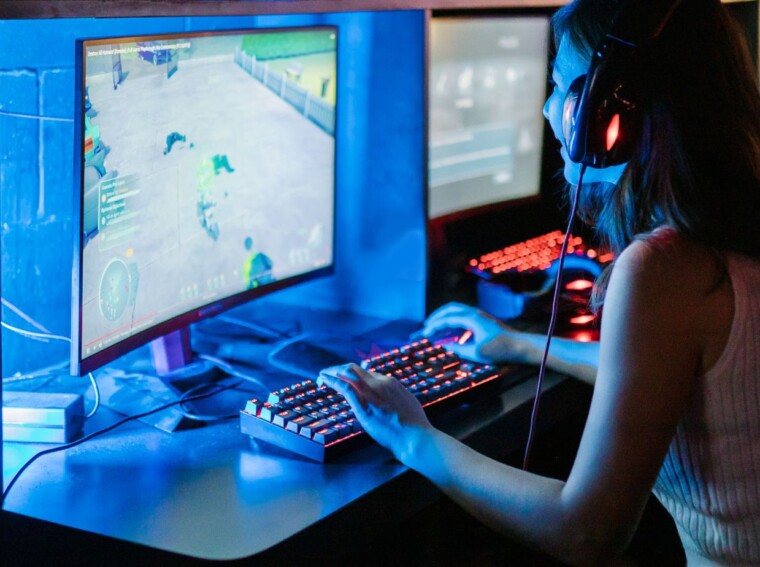Video games often spark debates about their impact on students. Some see them as distractions, while others see untapped potential. But can they actually support learning?
Many researchers are now exploring whether gaming affects cognitive growth. They wonder if players develop better problem-solving or faster processing speeds. This topic has become more widespread thanks to schools that use interactive apps during lessons.
Some classrooms already integrate music or crafts to encourage engagement. Similarly, teachers wonder if video games offer fresh ways to spark curiosity. Could these digital adventures encourage new skills in language or mathematics? This curiosity has led experts to examine how games blend fun with problem-solving.
Gaming and Education Trends
Experts ask if repeated play might also sharpen a student’s ability to focus. As the conversation around gaming and education grows, more people want to know if technology can shape brain development. Some wonder if students pick up strategies faster or adapt to changing rules with ease.
However, the best way to get real answers is to explore both the positive and negative sides of gaming. This approach allows parents, teachers, and administrators to weigh the true value of interactive media in classrooms. Is there a link between gaming success and academic performance, or is that just wishful thinking?
Cognitive Benefits
Research suggests certain video games may boost a student’s mental agility. They often challenge players to think, react, and plan quickly. Over time, this might improve memory and the ability to switch between tasks.
In some studies, students who played puzzle or strategy games showed enhanced problem-solving skills. They had to evaluate options and predict outcomes, a skill that can transfer to real-life scenarios.

Could this help during difficult homework or group projects?
Additionally, some gamers have observed improved awareness of space and movement. This is especially true of action-based titles. By carefully maneuvering characters and items, players learn to visualize and organize information. When repeated enough, these tasks can strengthen key parts of the brain that deal with logic and attention.
Practical Classroom Insights
Educators who include video games in their lesson plans often see increased enthusiasm among students. Teachers report that digital challenges can keep learners motivated and curious. But how does this approach work in everyday life?
Consider a few possibilities:
• Vocabulary Games: Some word-based apps require quick thinking and can improve spelling.
• Math Puzzles: Number-based games help students practice skills in a friendly, low-pressure setting.
• Collaboration Platforms: Certain team games encourage cooperation, which might boost social skills.
When games are integrated thoughtfully, they can align with lesson goals. By measuring progress in small steps, teachers can decide which activities help the most. In this way, games become one of many tools that foster student growth.
Potential Drawbacks
Though video games can be beneficial, there are challenges to consider. One major worry is time management. Students who become too invested might neglect homework or miss out on outdoor activities.
Some games also contain mature themes or rewards that can be distracting. This may not support healthy growth. Parents and teachers must stay aware of content ratings and help students choose age-appropriate titles.
Another concern is screen fatigue. Staring at a screen for long stretches can harm vision or energy levels. For some learners, physical play or hands-on projects might be more effective. Balancing fun and responsibility remains crucial. Otherwise, gaming risks turning into a hurdle rather than an advantage for young minds.
Real-World Examples
Across the globe, teachers and organizations test how games can improve learning. One popular example is Minecraft: Education Edition. In these virtual worlds, students design structures, solve puzzles, and practice teamwork.

Another example is the use of web-based portals that host science or history quests. Learners receive missions that require exploring virtual museums or conducting mock experiments. These interactive experiences push students to think like researchers rather than just memorize facts.
Also, some schools invite students to create simple video games. By coding storylines and shaping rules, they learn programming basics and creative problem-solving skills. When these projects connect to the curriculum, they can deepen understanding of subjects like math, art, and literature.
Conclusion
Video games have the potential to shape a student’s mind in positive ways. They can promote focus, creativity, and group problem-solving. Researchers continue to investigate if these benefits lead to better test scores or a smoother learning experience. At the same time, caution is needed. Not every title offers educational value, and too much gaming can interfere with other important activities.
The best outcomes often arise when teachers, caregivers, and students work together. They can agree on balanced time limits and content choices. In this way, gaming becomes a tool, not just a pastime. Will these digital adventures help the next generation become smarter? The answer may depend on how well technology is guided and managed in daily life.

